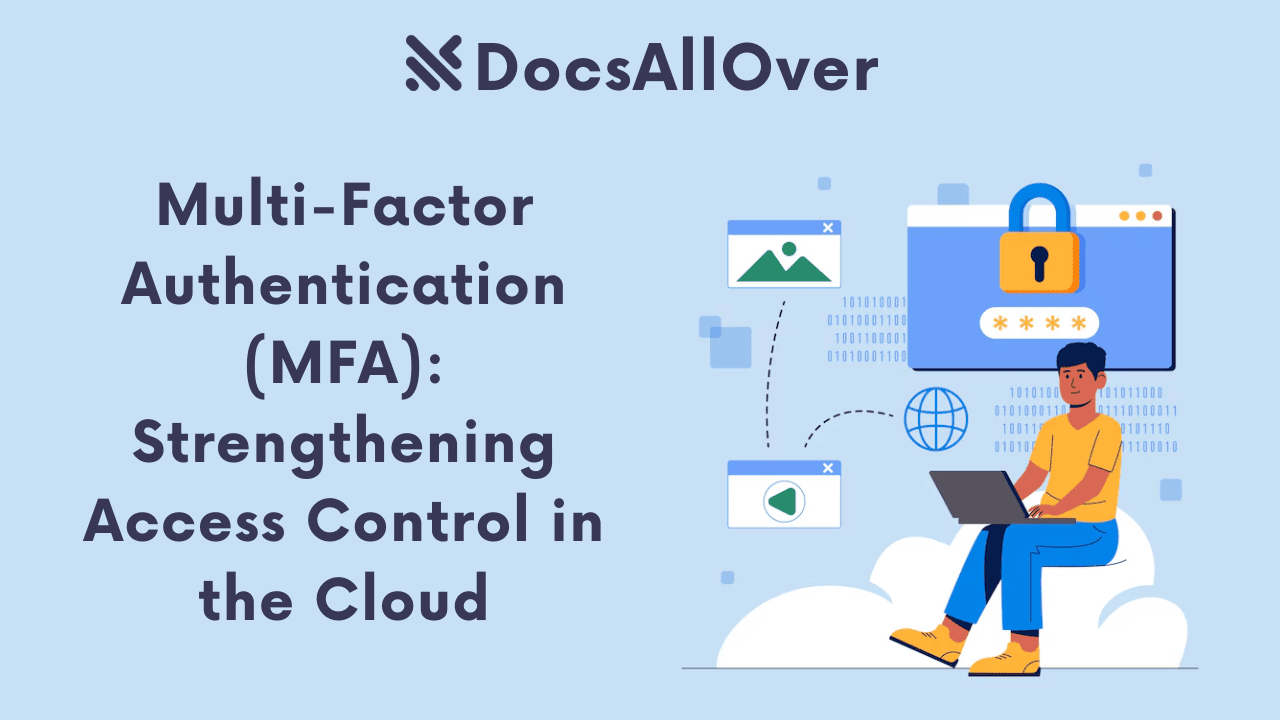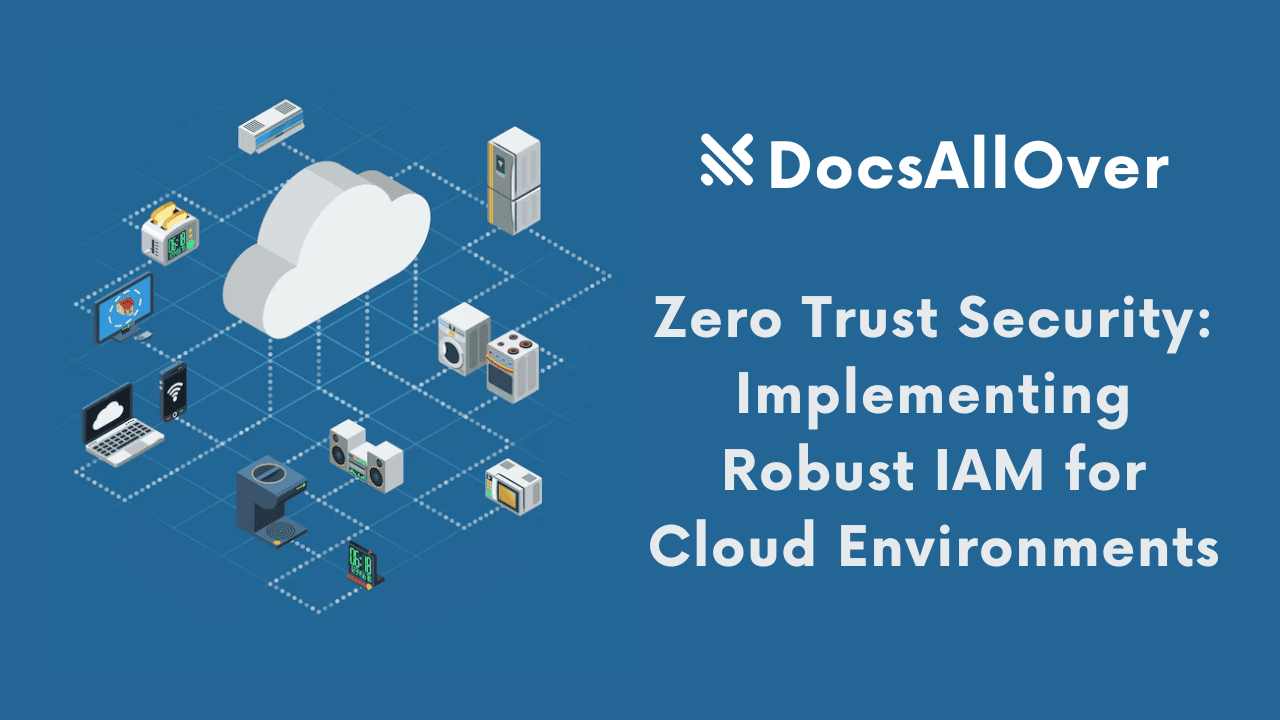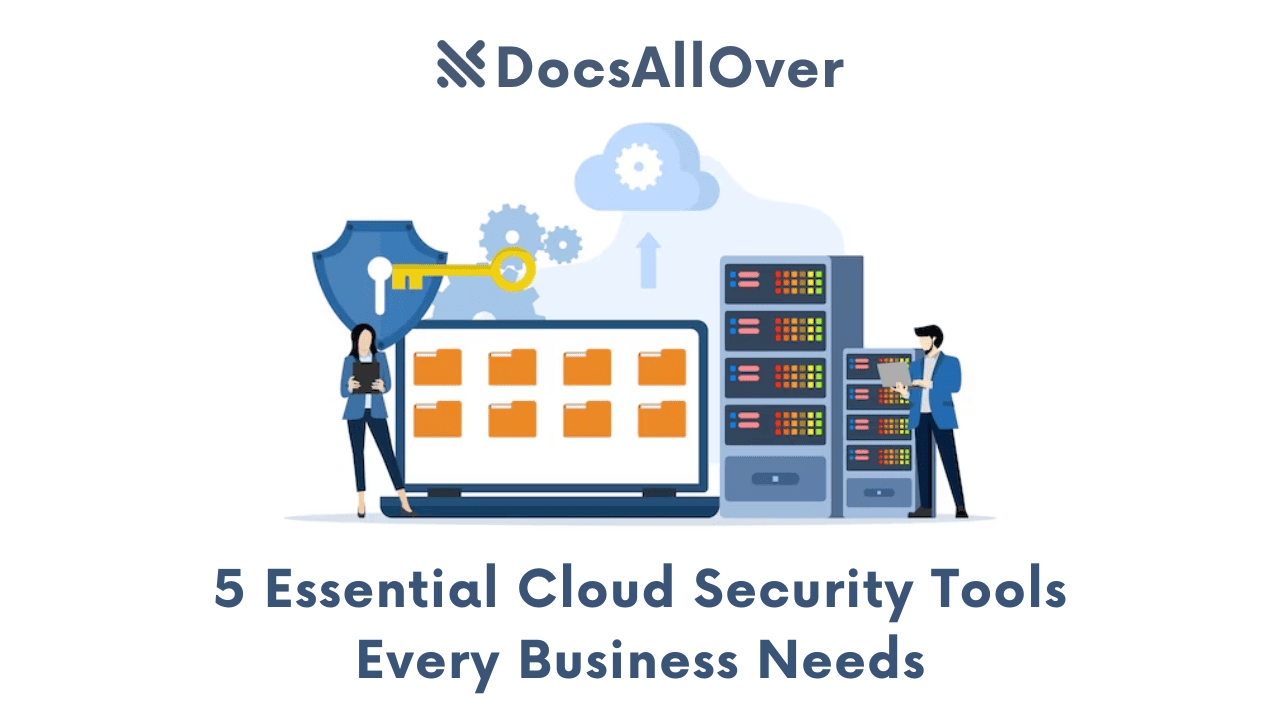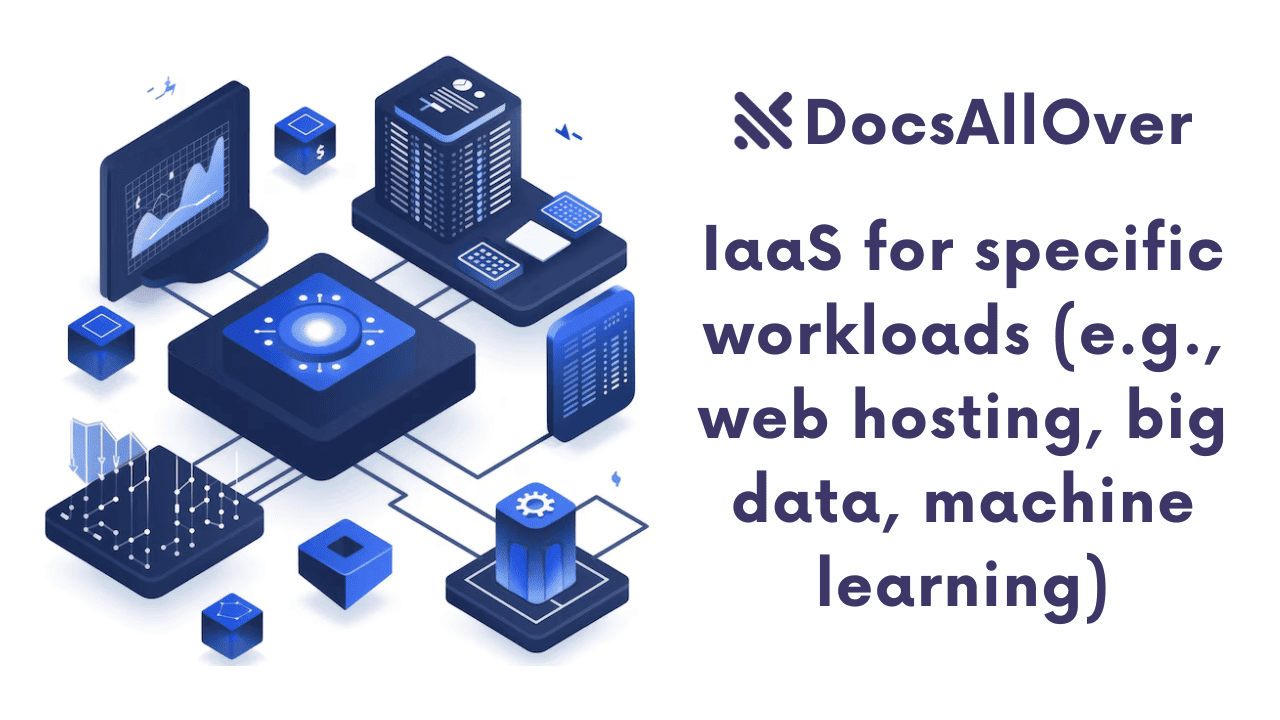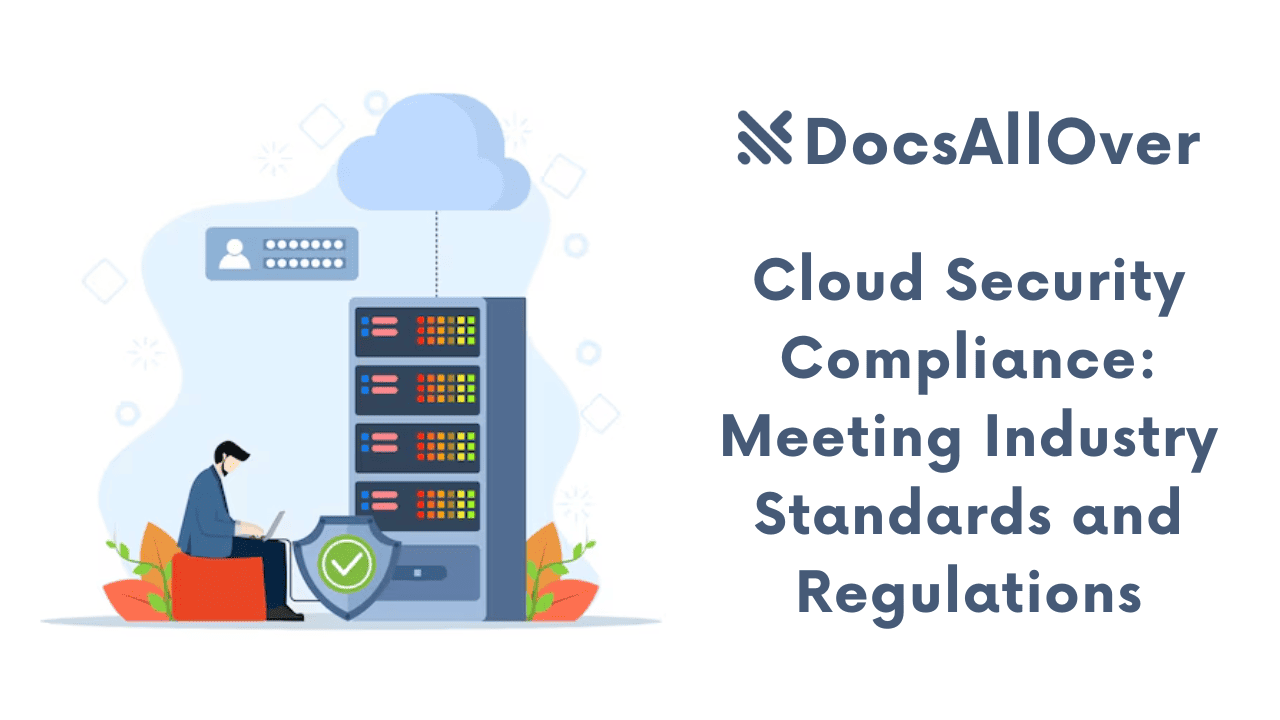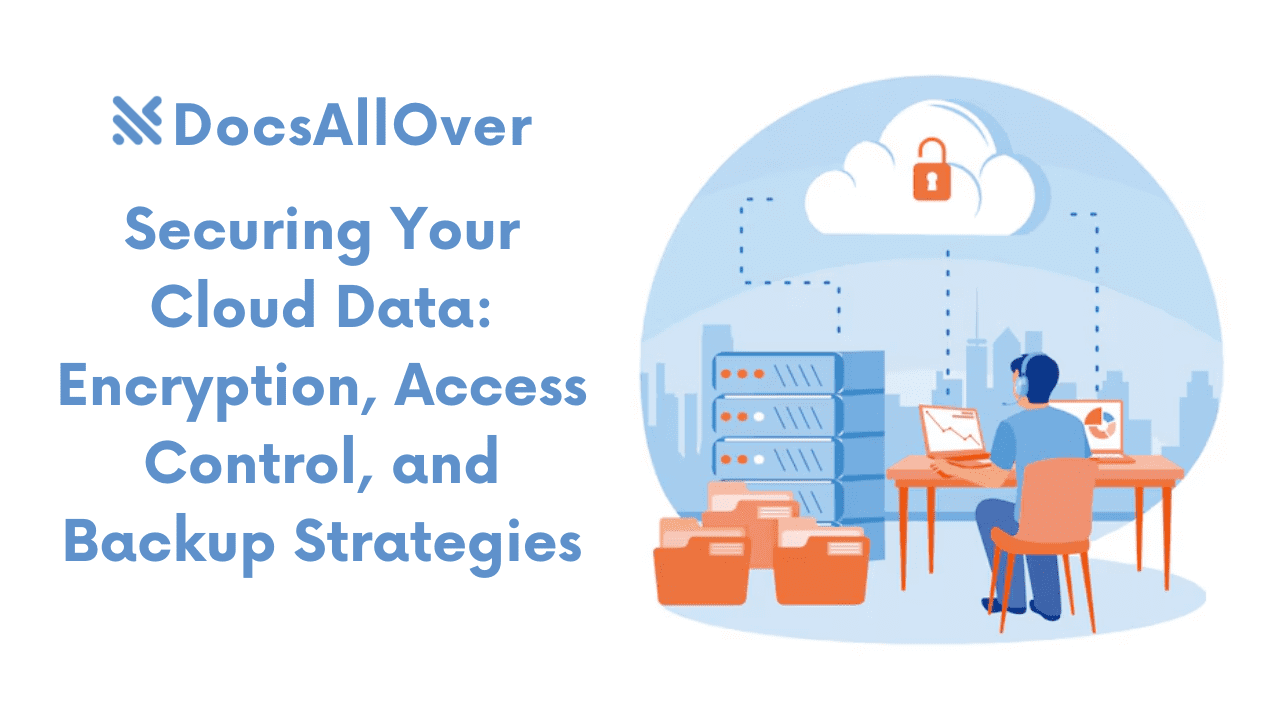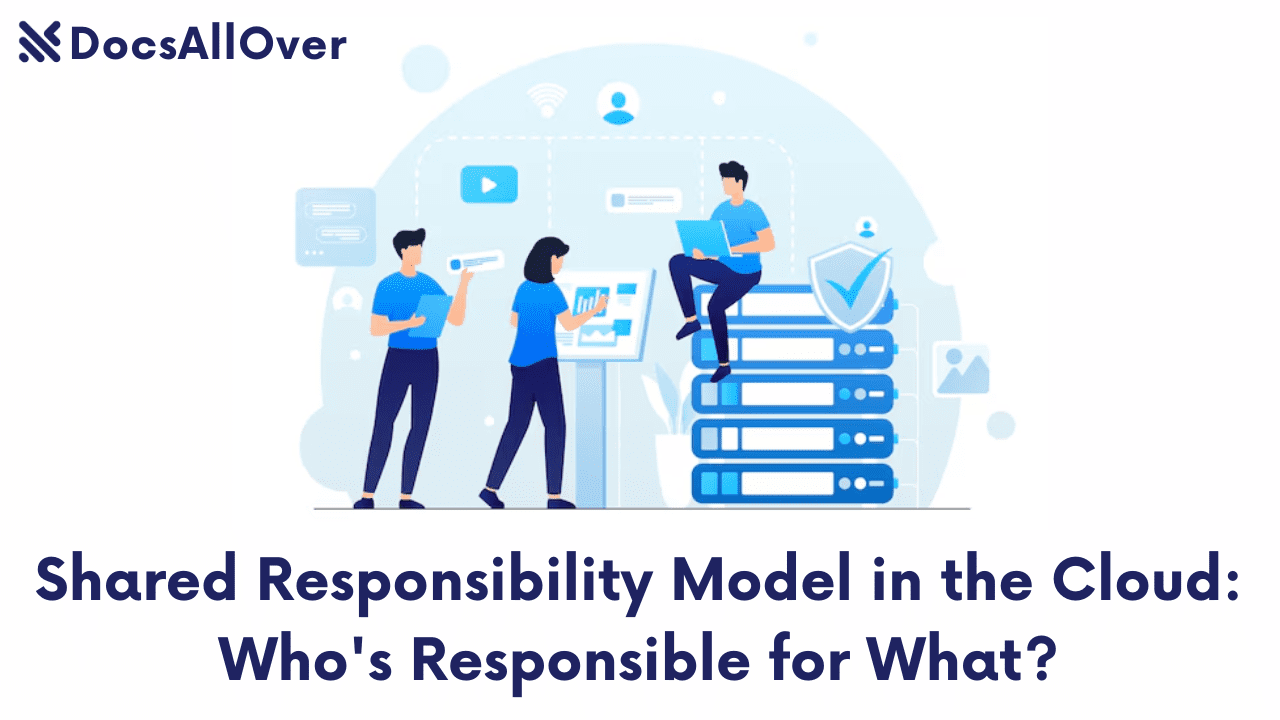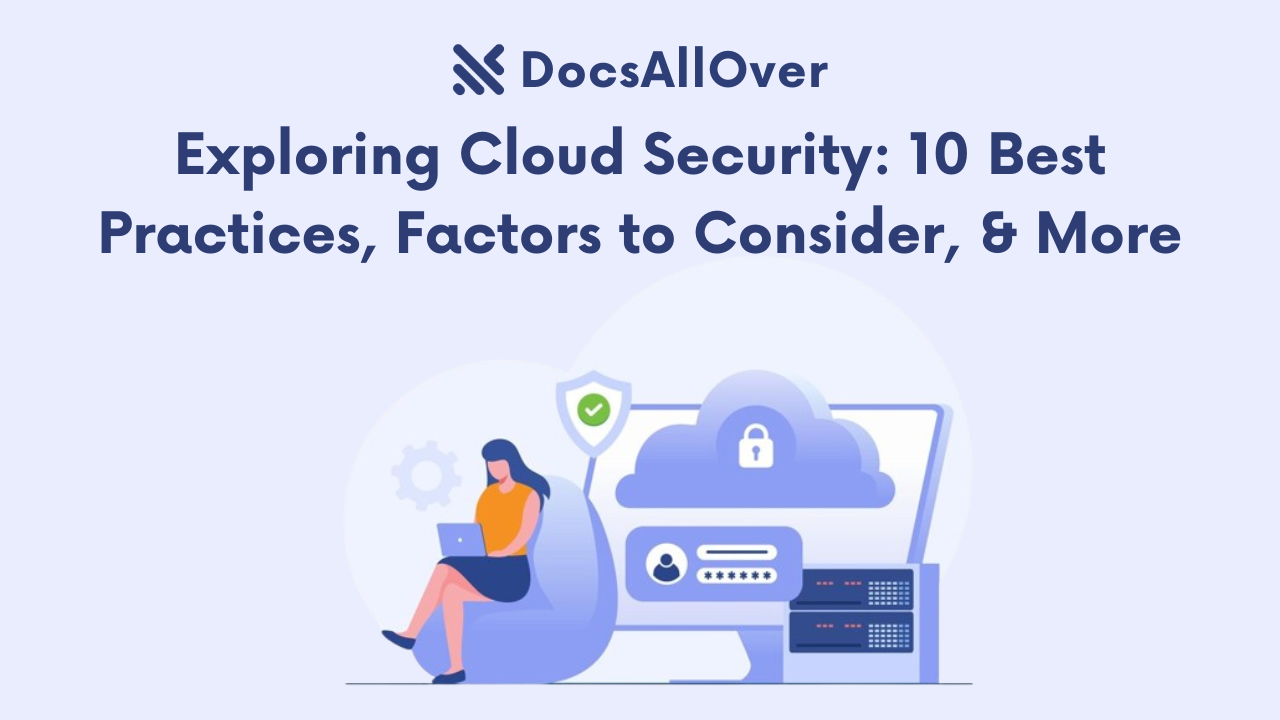Understanding Cloud Security: Threats and Best Practices for Protecting Data
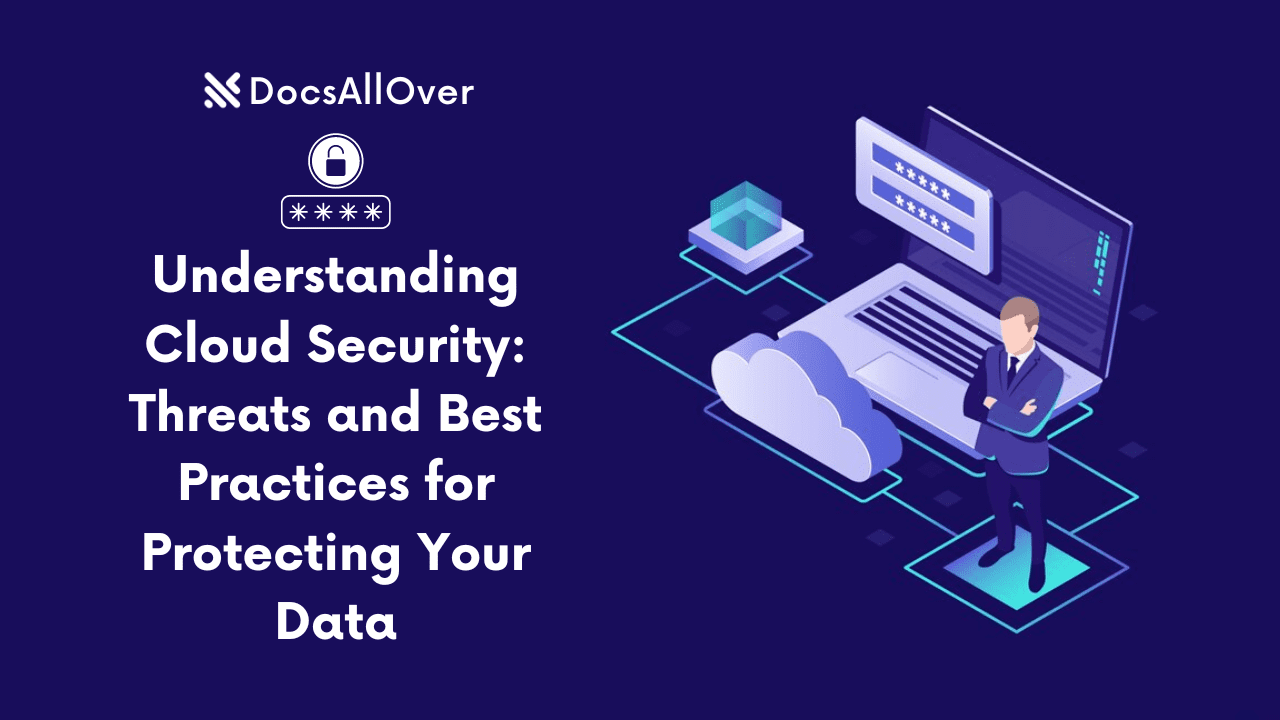
Securing Your Cloud: Essential Defense Strategies
The cloud. It's where we store our photos, our work documents, even our cat videos. But with great convenience comes great responsibility, especially when it comes to security. So, how do we ensure our precious data, entrusted to the vast cloud, remains safe and sound? That's where understanding cloud security comes in – a crucial skill for every individual and organization relying on this powerful technology.
Simplifying the Cloud Security Landscape:
First, let's dispel a common misconception: cloud security isn't solely the responsibility of your chosen provider. It's a shared responsibility model, with both the provider and you, the user, playing distinct roles. Think of it like renting an apartment building – the landlord ensures the overall structure is secure, but you take care of locking your own door and keeping valuables safe inside.
Cloud Provider Responsibilities:
- Physical Infrastructure Security: They secure data centers, servers, and networks against physical breaches and natural disasters.
- Software Security: They maintain secure platforms and regularly patch vulnerabilities in their systems.
- Compliance: They adhere to industry regulations and data privacy laws.
Your Responsibilities:
- Data Access Control: Implement strong authentication and authorization protocols to control who can access your data.
- Encryption: Encrypt your data at rest and in transit, making it unreadable even if intercepted.
- Security Monitoring: Actively monitor your cloud environment for suspicious activity and potential threats.
- Security Awareness: Train your employees and users on best security practices to avoid phishing attacks and other human error-related risks.
Common Cloud Security Threats:
Now, let's face the shadows lurking in the cloud. Some of the most prevalent threats include:
- Data Breaches: Hackers exploit vulnerabilities to gain unauthorized access to sensitive data, leading to financial losses and reputational damage.
- Malware: Malicious software can infiltrate your cloud environment, encrypting data or stealing it for ransom.
- Insider Threats: Disgruntled employees or malicious actors within your organization might misuse authorized access to compromise data.
- Denial-of-Service (DoS) Attacks: Hackers flood your cloud resources with traffic, making them unavailable to legitimate users, disrupting operations and causing financial losses.
The Impact of Cloud Security Breaches:
The consequences of a cloud security breach can be devastating. Imagine financial losses from stolen data or ransom demands, the erosion of customer trust and brand reputation, and potential legal ramifications for non-compliance with data privacy regulations. These are not just hypothetical scenarios – some of the world's biggest companies have fallen victim to cloud security breaches, incurring enormous costs and lasting damage.
The Good News:
By understanding the shared responsibility model, familiarizing yourself with common threats, and implementing best practices, you can significantly reduce the risk of a cloud security breach. Remember, cloud security is an ongoing process, not a one-time fix. Continuous monitoring, vigilant awareness, and proactive measures are key to keeping your data safe and secure in the ever-evolving cloud landscape.
This is just the beginning of your journey into understanding cloud security. Stay tuned for the next segment, where we'll delve deeper into best practices for securing your cloud environment and explore tools and strategies to make your data truly untouchable in the digital realm!
Understanding Cloud Security: Protecting Your Data in the Virtual Vault
Migrating to the cloud offers flexibility and scalability, but with great power comes great responsibility – the responsibility of safeguarding your valuable data. The cloud provides a vast playground for innovation, but it also expands the attack surface for malicious actors. So, how do you ensure your data remains safe and sound in this virtual realm? Let's explore some key pillars of cloud security:
1. Protecting Your Data in All Stages: Encryption at Rest and in Transit
Imagine your data floating through the digital highway. Would you send sensitive documents in plain sight? Of course not! Encryption scrambles your data into an unreadable format, acting as a virtual lock and key for authorized access only.
- Encryption at rest: Think of this as securing your data when it's parked in the cloud storage locker. Choose strong encryption algorithms and manage the keys wisely, keeping them separate from the encrypted data itself.
- Encryption in transit: This encrypts your data as it travels between your devices and the cloud, ensuring safe passage even if intercepted by prying eyes on the digital highway. Secure protocols like HTTPS and TLS play a crucial role here.
By implementing robust encryption at both rest and in transit, you build a strong first line of defense against unauthorized access and data breaches.
2. Who Can Access Your Data? Access Control and Identity Management
Think of a bustling library – everyone can walk in, but only authorized patrons can access restricted sections. In the cloud, access control systems define who can access your data and what they can do with it.
- Least privilege principle: Grant the minimum level of access required for each user or service. No librarian would give everyone master key access!
- Multi-factor authentication (MFA): Add an extra layer of security beyond passwords. Think of this as requiring a fingerprint scan in addition to the library card.
- Identity and access management (IAM) tools: These platforms centralize user access management, making it easier to manage permissions and audit activity.
By implementing clear access controls and leveraging IAM tools, you ensure only authorized individuals and services have access to your data, minimizing the risk of internal or accidental exposure.
3. Identifying and Responding Early: Threat Detection and Monitoring
Even the most secure fortresses need vigilant guards. Continuous threat detection and monitoring solutions act as your virtual security cameras, scanning for suspicious activity and potential breaches.
- Advanced threat detection tools: Employ anomaly detection and intrusion prevention systems to identify unusual activity, like a library patron trying to sneak out with rare manuscripts.
- Log analysis and SIEM integrations: Monitor system logs and integrate with Security Information and Event Management (SIEM) solutions to correlate disparate events and identify broader patterns indicating potential threats.
- Incident response plans: Be prepared to react quickly and effectively if a breach occurs. Think of this as having a fire emergency drill in place for the library.
By actively monitoring your cloud environment and having a rapid response plan in place, you can minimize the impact of security incidents and get back to business quickly.
4. Ensuring Business Continuity: Backups and Disaster Recovery
Even the most vigilant guards can't prevent every disaster. Natural disasters, power outages, or even accidental deletions can disrupt your cloud operations. This is where backups and disaster recovery (DR) plans come in.
- Regular backups: Regularly back up your data to a separate, secure location, like a fireproof vault in the library basement.
- Cloud-based backup solutions: Consider cloud-based backup services for enhanced redundancy and accessibility.
- Disaster recovery plans: Develop a detailed plan outlining how you will restore your data and applications in case of a major disruption, ensuring the library doors remain open even after a disaster.
By implementing comprehensive backup and DR strategies, you protect your data from potential loss and ensure business continuity even in the face of unforeseen events.
Remember, cloud security is not a one-time task, but an ongoing process. By implementing these best practices and staying vigilant, you can turn your virtual cloud vault into a fortress of data security, enabling you to reap the benefits of the cloud while safeguarding your most valuable asset – your information.
By making your content informative, engaging, and interactive, you can help others understand the importance of cloud security and empower them to protect their data in the digital age.
Best Practices for Secure Cloud Environments:
Understanding Cloud Security: Threats and Best Practices for Protecting Your Data
The cloud has revolutionized the way we store and access data, offering unparalleled scalability, flexibility, and convenience. But with this power comes responsibility, as ensuring the security of your cloud environment is paramount. So, how do you navigate the digital sky and shield your valuable information from malicious actors?
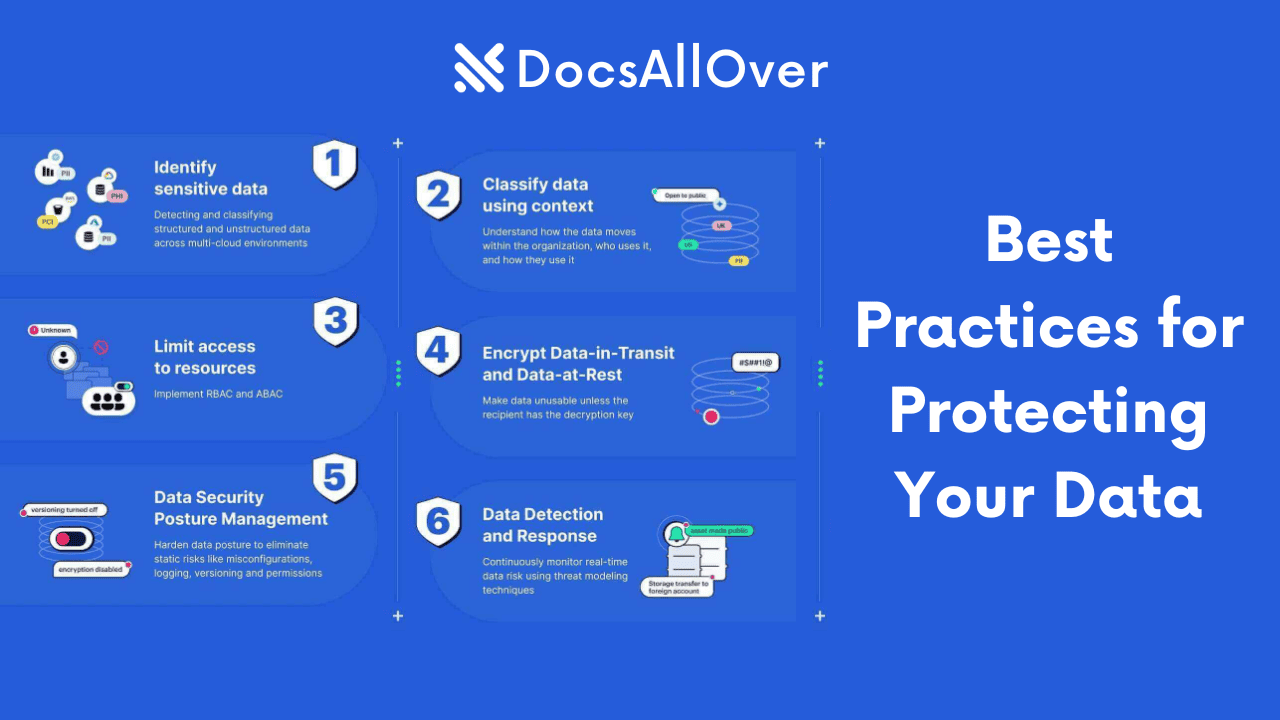
Data is the lifeblood of our lives. From personal information like bank accounts and medical records to financial transactions and business secrets, our valuable data is constantly flowing through the veins of the internet. But with great connectivity comes great responsibility. Protecting this sensitive information from unauthorized access, theft, and misuse is paramount.
Fear not, fellow data guardian! This blog post delves into the five essential best practices you can implement to safeguard your data and build a robust fortress of digital security. So, grab your metaphorical shield and sword, and let's embark on this quest for data protection!
- 1. Identify and Classify Your Data: Before you build your defenses, you need to know what you're protecting. Conduct a thorough data inventory to identify all the sensitive information you hold. Classify this data based on its level of confidentiality and criticality. High-priority data, like financial records or customer credit card information, naturally requires stricter security measures than, say, your vacation photos.
- 2. Encrypt Your Data Fortress: Encryption is your digital suit of armor, scrambling your data into an unreadable code that only authorized individuals can decipher. Implement data encryption at rest (when stored) and in transit (when moving) to ensure its protection even if attackers breach your perimeter. Remember, even the most secure castle can be infiltrated, but encryption renders the stolen treasure useless without the key.
- 3. Access Control: Just like a medieval castle with guarded gates, your data needs a strong access control system. Implement granular access controls to dictate who can access what data and under what circumstances. This means employing multi-factor authentication, strong password policies, and role-based access control to ensure only authorized knights (users) can enter specific sections of your data kingdom.
- 4. Vigilance is Key: Monitor and Secure Your Walls Even the most fortified castle needs watchful guards. Continuously monitor your systems for suspicious activity using tools like intrusion detection and prevention systems (IDS/IPS) and security information and event management (SIEM) solutions. Be proactive in patching vulnerabilities and updating software to prevent attackers from exploiting them. Remember, eternal vigilance is the price of data security.
- 5. Data Backup and Recovery: The Emergency Hatch No matter how strong your defenses, unforeseen events can occur. Data breaches, hardware failures, and natural disasters can all threaten your precious information. Regularly back up your data to secure offsite locations, employing the 3-2-1 rule: keep three copies of your data on two different storage mediums, with one copy stored offsite. This ensures you have a safety net to restore your data even in the worst-case scenario.
Let's delve into the essential best practices for building a secure cloud environment:
1. Secure Cloud Configuration:
Imagine your cloud environment as a fortified castle. Just like erecting strong walls and securing gates, configuring your cloud services and resources for optimal security is crucial. Here's how:
- Enable security features: Many cloud providers offer built-in security tools like encryption, logging, and access controls. Familiarize yourself with these features and activate them wherever possible.
- Minimize exposed surfaces: Close any unnecessary ports or protocols, harden system configurations, and disable unused features to reduce potential attack vectors.
- Regularly update software: Patching vulnerabilities promptly is vital. Implement automated or scheduled updates to ensure your systems remain secure against known exploits.
Remember, a properly configured cloud is one step closer to an impenetrable fortress.
2. Least Privilege Principle:
Granting everyone a master key to your castle might not be the wisest move, right? The same applies to cloud access. Implementing the **least privilege principle** ensures users and applications only have the minimum permissions required to perform their tasks. This minimizes the potential damage if one account is compromised.- Role-based access control (RBAC): Define specific roles with associated permissions, assigning them to users and applications based on their needs. This ensures only authorized individuals can access specific data and resources.
- Multi-factor authentication (MFA): Add an extra layer of protection beyond passwords by requiring additional verification factors like one-time codes or biometric authentication.
- Monitor user activity: Track and analyze user access logs to identify any suspicious behavior or unauthorized access attempts.
By following the least privilege principle, you create a layered defense system, where even if one layer is breached, the remaining layers help mitigate the damage and protect your core data.
3. Regular Security Audits and Vulnerability Assessments:
Just like a diligent king regularly inspects his castle for weaknesses, **conducting regular security audits and vulnerability assessments** is crucial for maintaining a secure cloud environment.- Penetration testing: Simulate real-world attack scenarios to identify potential vulnerabilities in your system. This proactive approach helps you address weaknesses before they are exploited by malicious actors.
- Vulnerability scanning: Utilize automated tools to scan your systems for known vulnerabilities in software, configurations, or network settings. Patching these vulnerabilities promptly minimizes the risk of exploitation.
- Security posture assessments: Evaluate your overall security posture by analyzing your security policies, procedures, and technology controls. This comprehensive assessment helps identify areas for improvement and strengthen your overall security framework.
Remember, regular security checks act as your early warning system, allowing you to proactively address vulnerabilities and keep your cloud fortress guarded against evolving threats.
4. Incident Response Planning and Preparedness:
Even the most secure castles can face unexpected attacks. That's why having a **predefined incident response plan** is like having a well-trained army ready to defend your data.- Define response procedures: Establish clear steps for identifying, containing, and remediating security incidents. This includes roles and responsibilities for different team members.
- Regularly test and update your plan: Practice your incident response plan through simulations to ensure everyone knows their roles and responsibilities. Adapt and update your plan as your systems and threats evolve.
- Communicate effectively: Establish clear communication protocols during an incident to keep stakeholders informed and minimize disruption.
By having a well-oiled incident response plan, you can effectively mitigate the impact of a security breach and minimize potential damage to your data and reputation.
Building a secure cloud environment requires a proactive and multi-layered approach. By implementing these best practices and constantly vigilant, you can transform your cloud from a potential target into a secure castle, safeguarding your valuable data in the ever-evolving digital landscape. Remember, security is a continuous journey, not a one-time destination. So, keep your defenses strong, stay informed about emerging threats, and adapt your strategies to ensure your cloud remains a safe haven for your valuable information.
Securing Your Cloud Kingdom: Advanced Strategies and Real-World Inspiration
Your data, the lifeblood of your digital realm, now resides in the vast cloud kingdom. But with great power comes great responsibility – the responsibility to build robust defenses against ever-evolving cyber threats. In this blog, we delve deeper into advanced cloud security solutions, offering tools and best practices to safeguard your precious information.
1. Advanced Cloud Security Solutions: Fortifying Your Digital Walls
Imagine your cloud storage as a majestic castle. You have the basic ramparts and guards (the inherent cloud security features), but fortifying your kingdom requires additional layers of protection:
- Cloud Security Tools and Services: Deploy next-generation tools like intrusion detection and prevention systems (IDS/IPS), data loss prevention (DLP), and threat intelligence services to detect and thwart malicious activity before it wreaks havoc.
- Encryption: Cloak your data in impenetrable armor! Encrypt data at rest (stored) and in transit (moving) to render it useless to prying eyes, even if attackers infiltrate your castle.
- Identity and Access Management (IAM): Secure your gates with multi-factor authentication, strong password policies, and granular access controls. Only authorized knights (users) should have access to specific areas of your kingdom (data).
2. Compliance with Security Regulations: Honoring the Code of Data Privacy
Every kingdom thrives on laws and regulations. In the cloud, compliance dictates how you handle data, ensuring privacy and security:
- General Data Protection Regulation (GDPR): For European citizens, this regulation sets strict data protection standards. Understand your obligations and implement secure data practices.
- Health Insurance Portability and Accountability Act (HIPAA): If you handle healthcare data, ensure compliance with HIPAA to protect sensitive patient information.
- Payment Card Industry Data Security Standard (PCI DSS): For those processing credit card data, PCI DSS compliance is key to mitigating financial fraud risks.
By adhering to relevant regulations, you not only protect your data but also build trust with your subjects (users) and avoid hefty fines.
3. Continuous Security Monitoring and Improvement: Staying Vigilant Against Evolving Threats
No kingdom is ever truly secure. Continuous vigilance is critical:
- Log Monitoring: Scrutinize your logs like royal advisors analyzing battle reports. Look for suspicious activity, identify vulnerabilities, and adapt your defenses accordingly.
- Penetration Testing: Simulate cyberattacks using ethical hackers to uncover hidden weaknesses. Patch vulnerabilities and strengthen your defenses before real attackers exploit them.
- Regular Security Audits: Periodically assess your cloud security posture like a royal inspector. Identify areas for improvement and implement necessary upgrades.
Remember, security is an ongoing process, not a one-time endeavor. By constantly monitoring, testing, and evolving your defenses, you stay ahead of the ever-changing landscape of cyber threats.
4. Case Studies and Success Stories: Learning from the Wise and the Brave
Every kingdom has its tales of triumphs and tribulations. Learn from others:
- Real-World Examples of Cloud Security Breaches: Analyze past breaches like cautionary tales. Understand the vulnerabilities exploited and the lessons learned to strengthen your own walls.
- Organizations Successfully Implementing Cloud Security: Draw inspiration from organizations that have built robust cloud security infrastructures. Identify best practices and adapt them to your own kingdom.
- The Future of Cloud Security: Emerging Trends and Innovations: Keep your eyes on the horizon. Stay informed about new technologies and strategies for improved cloud security, like zero-trust security and blockchain-based data protection.
Learning from others' experiences, both positive and negative, equips you with valuable knowledge to fortify your own cloud kingdom.
By venturing into advanced security solutions, embracing compliance, maintaining vigilance, and learning from others, you can build a cloud realm where your data reigns supreme, safe from even the most cunning digital invaders. Remember, in the world of cloud security, the brave and informed rule!
This blog is just a starting point. Feel free to expand on these sections, add specific examples of security tools and compliance regulations, and even include interviews with security experts or case studies from specific industries. The more personalized and actionable your content, the more valuable it will be for your readers.
May your cloud kingdom prosper under the banner of unwavering security!

